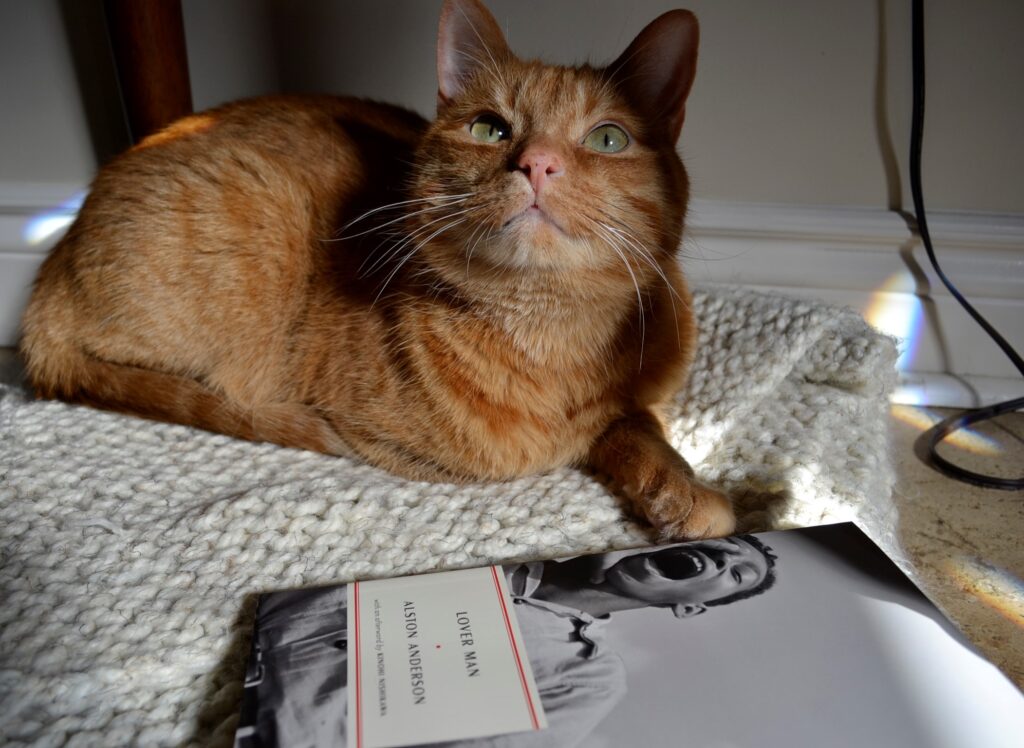Interviews from the Other Side
My lovely spouse is part of a volunteer organization for work, and this week she was part of conducting interviews in order to hire a freelancer. While I sat on the other side of the computer listening as she asked questions, listened to answers, and went through the familiar paces of the job interview dance, I couldn’t help but remember when I was young and looking for a job at a bookstore.

I was still in university when I got my job at a used bookstore that is now long gone. It wasn’t my first job, but I think of it as my first real one. Dealing with customers, cleaning old books for re-sale, and trying my best to keep track of newer releases in genres that I would never read. I was so nervous when I started on my first shift. I could barely remember the very simple instructions on how to work an ancient cash register. By the time I left to work at the university after graduation, that store was like a second home and I breathed in the musk of paperbacks like I needed the molecules of them as much as oxygen.
For years afterward I haunted the storefront in the form of looking wistfully upon it on every drive downtown and later through Google Earth. When it closed, a part of my life ended that I still think of with fondness.

A Forgotten Classic
It’s rare that I come across a book that doesn’t have a Wikipedia entry, but that’s exactly what I have for review this week in Alston Anderson’s Lover Man. My lovely spouse indulgently ordered me all of the McNally Editions for 2023. McNally’s curation of classics has so far very much impressed me. They specialize in re-printing classics that seem to have been forgotten by time due to issues completely outside of their often spectacular and ground-breaking writing.

In the case of Lover Man, published in 1959, the sands that buried it were laden with systemic racism and the unwillingness of the reading public to see how brutal and horrible the effects of that racism were. These stories, centring around the stark realities of coming of age and daily life in the south at the time of Jim Crow, are not written like many others of the time were — that being with an eye to what a white audience could tolerate and connect with.
Anderson’s stories are unflinchingly Black narratives that did not pander to white readers. It is because of this that his work did not achieve the success it should have and that is a profound shame.

The Wit of the Very Short Story
What I admired most about Anderson’s writing was his ability to take a subject that seems so simple — like two children playing the dozens and going fishing — and turn it on its head. He layers meaning on top of meaning on top of meaning until every narrative is rich and strays far from just the subject at hand into a complex tapestry of politics, tension, and the injustices of the world at large.
It is very hard to take a story of only a few pages and expand it so that it leaps so far off of the page, but Anderson has achieved this lofty feat. Lover Man’s interconnected stories linger with the reader long after the book — a relatively quick and enjoyable read — is put down and given a respected place on the shelf.

What’s Missing
I will say that what is missing in Anderson’s stories is a Black female perspective. I will give him credit for realising in his writing that Black women are often the butt of jokes and trickery and that their challenges are great as well as the pressures put upon them, but Anderson seems unbothered by this reality. It feels like women are somehow a means to an end in his stories. Women are a part of men’s growing-up and have no life of their own that isn’t defined by those men. Maternal or objects of desire, they occupy an uncomfortable space in the narrative. They are the continual victims of harassment and sexism and Anderson offers little sympathy for them. I have an especial distaste for the ‘shrew’ characterisation he writes in the first story of the collection.
It’s a definite limitation of the writing, but I wouldn’t recommend throwing the baby out with the bathwater. It’s important to know the shortcomings of a perspective, even while celebrating the strengths and mastery of other parts of it. This is especially true when looking at work from the distant past when ideas were different and often cringe-worthy.

A Sunny Day Inside
Despite not being the one that actually conducted the interviews, I still found them very tiring. So much so that a sunny Saturday couldn’t induce me to want to go outside. Maybe later I’ll do what the cats do when we put them on the leash and take them into the backyard: venture onto the porch and flop over into the sunshine.
I try to enjoy the weather whenever I can, but sometimes I just feel too tired out. I try to treat myself as kindly as possible on those days and accept a warm cup of tea from my loving spouse while I watch the birds at the feeder.

